Generalized Connectivity of the Mycielskian Graph under g-Extra Restriction
Abstract
1. Introduction
2. Terminology and Notations
3. Main Results
- (1)
- If there exists some such that , then ( be the twin of F) is disconnected and the smallest component is the isolated vertex .
- (2)
- If for any , then is connected to in (where and be the twin of and F, respectively).
- (3)
- If there exists one vertex w such that and , then is disconnected and ( is the twin of w) is an isolated vertex.
- (2)
- In this situation, for any , there exists one edge . By the construction of , and (see Figure 2b). Then is connected to in .
- (3)
- In this situation, there exists one vertex w such that and . By the construction of , is the twin of w, and (see Figure 2c). Then is disconnected and is an isolated vertex.
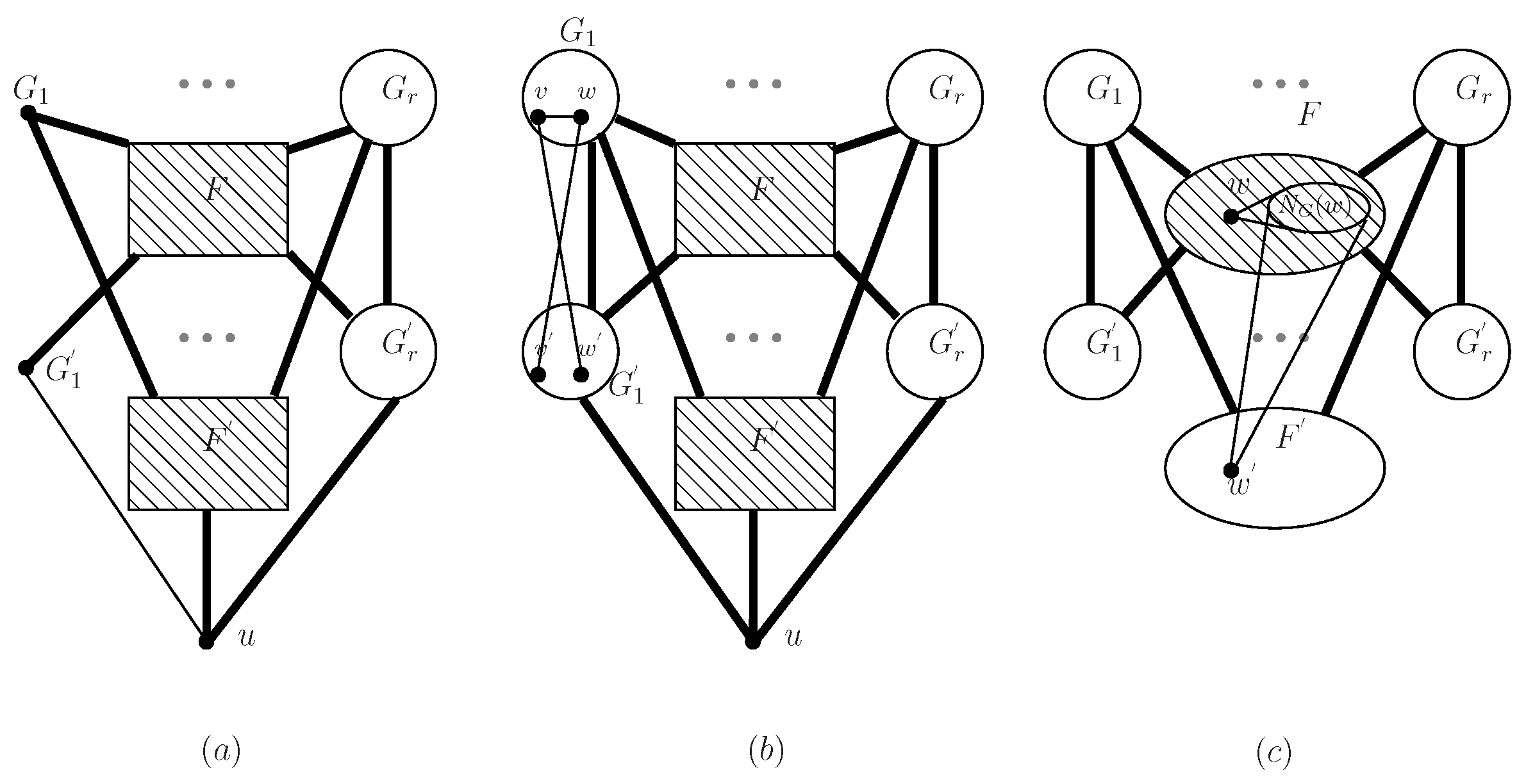
4. Conclusions
Author Contributions
Funding
Institutional Review Board Statement
Informed Consent Statement
Data Availability Statement
Conflicts of Interest
References
- Harary, F. Conditional connectivity. Networks 1983, 13, 347–357. [Google Scholar] [CrossRef]
- Fábregta, J.; Fiol, M. On the extraconnectivity of graph. Discrete Math. 1996, 155, 49–57. [Google Scholar] [CrossRef]
- Boesch, F.T. Synthesis of reliable networks-a survey. IEEE Trans. Reliab. 1986, 35, 240–246. [Google Scholar] [CrossRef]
- Chang, N.-W.; Hsieh, S.-Y. {2,3}-extraconnectivities of hypercube-like networks. J. Comput. System Sci. 2013, 79, 669–688. [Google Scholar] [CrossRef]
- Chang, N.-W.; Tsai, C.-Y.; Hsieh, S.-Y. On 3-extra connectivity and 3-extra edge connectivity of folded hypercubes. IEEE Trans. Comput. 2014, 63, 1593–1599. [Google Scholar] [CrossRef]
- Fábregta, J.; Fiol, M. Extraconnectivity of graphs with large girth. Discrete Math. 1994, 127, 163–170. [Google Scholar] [CrossRef]
- Guo, J.; Lu, M. The extra connectivity of bubble-sort star graphs. Theoret. Comput. Sci. 2016, 645, 91–99. [Google Scholar] [CrossRef]
- Hong, W.-S.; Hsieh, S.-Y. Extra edge connectivity of hypercube-like networks. Int. J. Parallel Emergent Distrib. Syst. 2013, 28, 123–133. [Google Scholar] [CrossRef]
- Hsieh, S.-Y.; Chang, Y.-H. Extraconnectivity of k-ary n-cube networks. Theoret. Comput. Sci. 2012, 443, 63–69. [Google Scholar] [CrossRef]
- Latifi, S.; Hegde, M.; Pour, M.N. Conditional connectivity measures for large multiprocessor systems. IEEE Trans. Comput. 2002, 43, 218–222. [Google Scholar] [CrossRef]
- Lv, M.; Zhou, S.; Sun, X.; Lian, G.; Liu, J. Reliability of (n, k)-star network based on g-extra conditional fault. Theoret. Comput. Sci. 2019, 757, 44–55. [Google Scholar] [CrossRef]
- Li, X.-Y.; Fan, J.-X.; Lin, C.-K.; Cheng, B.-L.; Jia, X.-H. The extra connectivity, extra conditional diagnosability and t/k-diagnosability of the data center network DCell. Theoret. Comput. Sci. 2019, 766, 16–29. [Google Scholar] [CrossRef]
- Sun, X.; Dong, Q.; Zhou, S.; Lv, M.; Lian, G.; Liu, J. Fault tolerance analysis of hierarchical folded cube. Theoret. Comput. Sci. 2019, 790, 117–130. [Google Scholar] [CrossRef]
- Sabir, E.; Mamut, A.; Vumar, E. The extra connectivity of the enhanced hypercubes. Theoret. Comput. Sci. 2019, 799, 22–31. [Google Scholar] [CrossRef]
- Zhang, M.-M.; Zhou, J.-X. On g-extra connectivity of folded hypercubes. Theoret. Comput. Sci. 2015, 593, 146–153. [Google Scholar] [CrossRef]
- Yuan, J.; Liu, A.-X.; Wang, X. The Relationship Between the g-Extra Connectivity and the g-Extra Diagnosability of Networks Under the MM* Model. Comput. J. 2021, 64, 921–928. [Google Scholar] [CrossRef]
- Wei, Y.-L.; Li, R.-H.; Yang, W.-H. The g-Extra Edge-Connectivity of Balanced Hypercubes. J. Interconnect. Netw. 2021, 21, 2142008. [Google Scholar] [CrossRef]
- Zhu, Q.; Ma, F.; Guo, G.-D.; Wang, D.-J. A new approach to finding the extra connectivity of graphs. Discrete Appl. Math. 2021, 294, 265–271. [Google Scholar] [CrossRef]
- Shu, C.; Li, X.-J.; Ma, M.-J. Note on reliability of star graphs. Theoret. Comput. Sci. 2022, 923, 366–375. [Google Scholar] [CrossRef]
- Tian, Z.-X.; Zhang, M.-Z.; Feng, X. Reliability measure of the n-th cartesian product of complete graph K4 on h-extra edge-connectivity. Theoret. Comput. Sci. 2022, 922, 46–60. [Google Scholar] [CrossRef]
- Kozhevnikov, V.S.; Raigorodskii, A.M.; Zhukovskii, M.E. Large cycles in random generalized Johnson graphs. Discrete Math. 2022, 345, 3. [Google Scholar] [CrossRef]
- Raigorodskii, A.M.; Karas, V.S. Asymptotics of the Independence Number of a Random Subgraph of the Graph G(n, r, < s). Math. Notes 2022, 111, 124–131. [Google Scholar]
- Mycielski, J. Sur le colouriage des graphes. Colloq. Math. 1955, 3, 161–162. [Google Scholar] [CrossRef]
- Chang, G.; Huang, L.; Zhu, X. Circular chromatic number of Mycielskis graphs. Discrete Math. 1999, 205, 23–37. [Google Scholar] [CrossRef]
- Balakrishnan, R.; Raj, S.F. Connectivity of the Mycielskian of a graph. Discrete Math. 2008, 308, 2607–2610. [Google Scholar] [CrossRef]
- Guo, L.; Liu, R.; Guo, X. Super connectivity and super edge connectivity of the Mycielskian of a graph. Graphs Comb. 2012, 28, 143–147. [Google Scholar] [CrossRef]
- Guo, L.; Guo, X. Connectivity of the Mycielskian of a digraph. Appl. Math. Lett. 2009, 22, 1622–1625. [Google Scholar] [CrossRef]
- Li, S.; Zhao, Y.; Li, F.; Gu, R. The generalized 3-connectivity of the Mycielskian of a graph. Appl. Math. Comput. 2019, 347, 882–890. [Google Scholar] [CrossRef]
- Raj, S.F. Connectivity of the generalised Mycielskian of digraphs. Graphs Comb. 2013, 29, 893–900. [Google Scholar]
- Liu, D. Circular chromatic number for iterated Mycielski graphs. Discrete Math. 2004, 285, 335–340. [Google Scholar] [CrossRef][Green Version]
- Liu, H. Circular chromatic number and Mycielski graphs. Acta Math. Sci. 2006, 26, 314–320. [Google Scholar] [CrossRef]
- Granados, A.; Pestana, D.; Portilla, A.; Rodríguez, J. Gromov Hyperbolicity in Mycielskian Graphs. Symmetry 2017, 9, 131. [Google Scholar] [CrossRef]
- Savitha, K.S.; Vijayakumar, A. Some network topological notions of the Mycielskian of a graph. AKCE Int. J. Graphs Comb. 2016, 13, 31–37. [Google Scholar]
- Bondy, J.A.; Murty, U.S.R.; Theory, G. GTM 244; Springer: Berlin/Heidelberg, Germany, 2008. [Google Scholar]


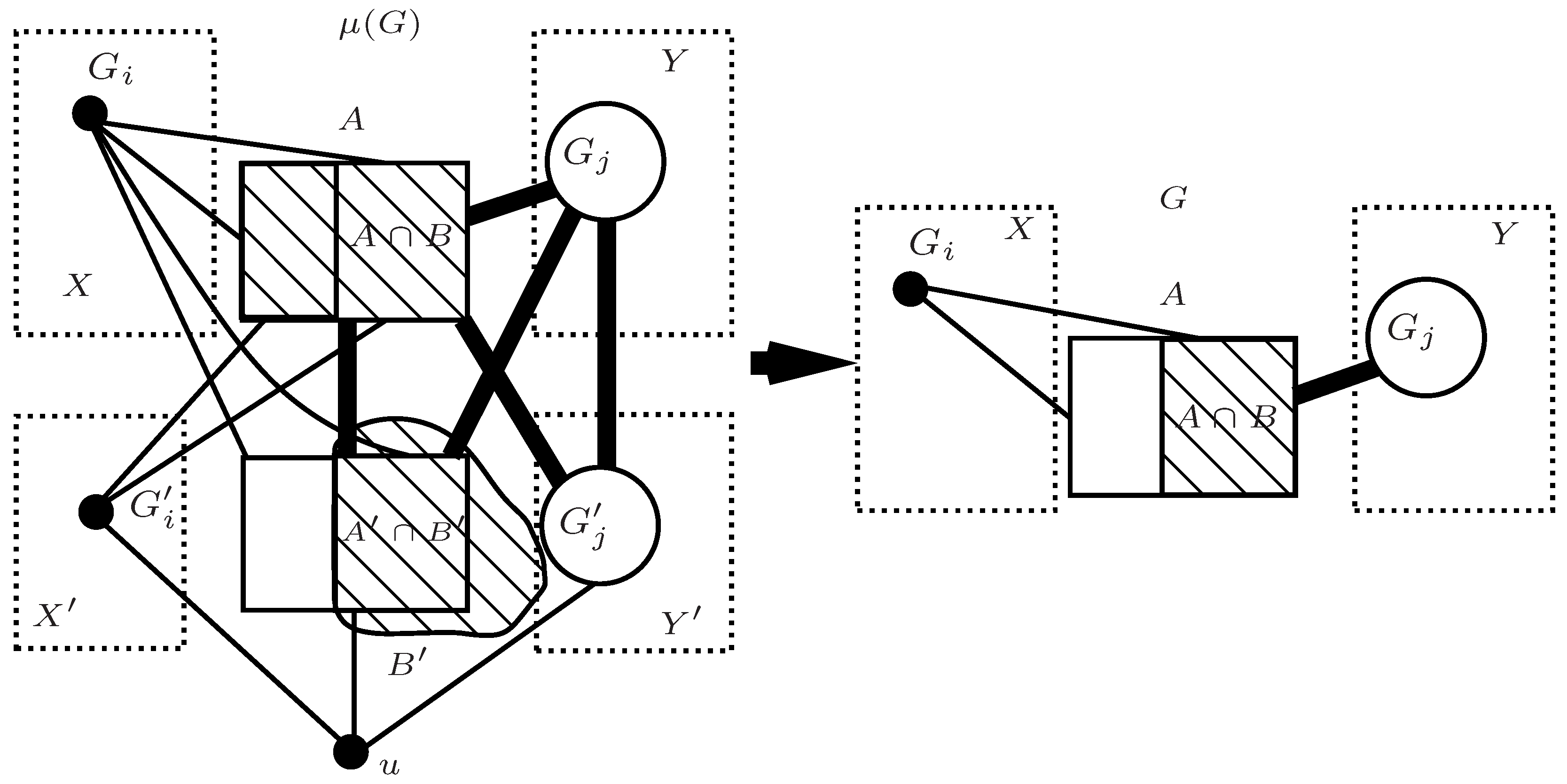
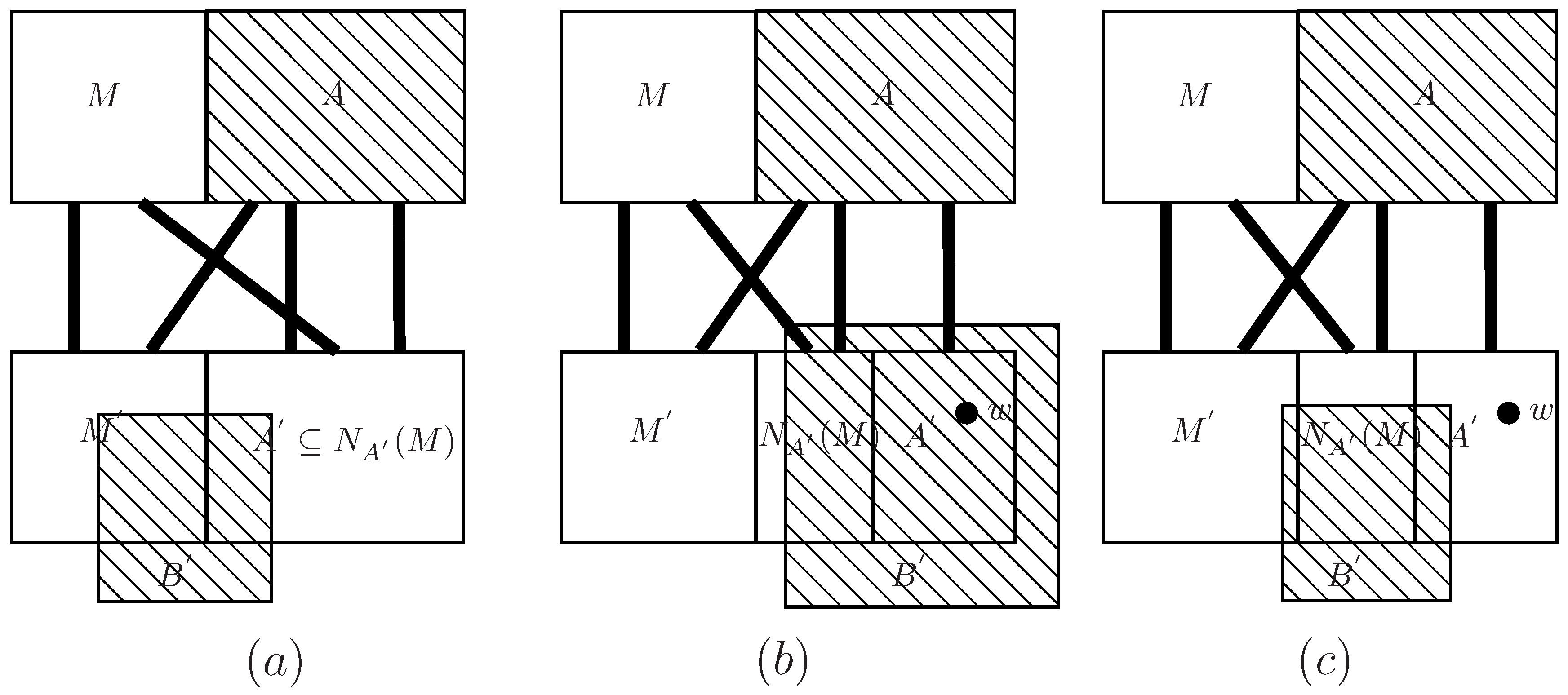

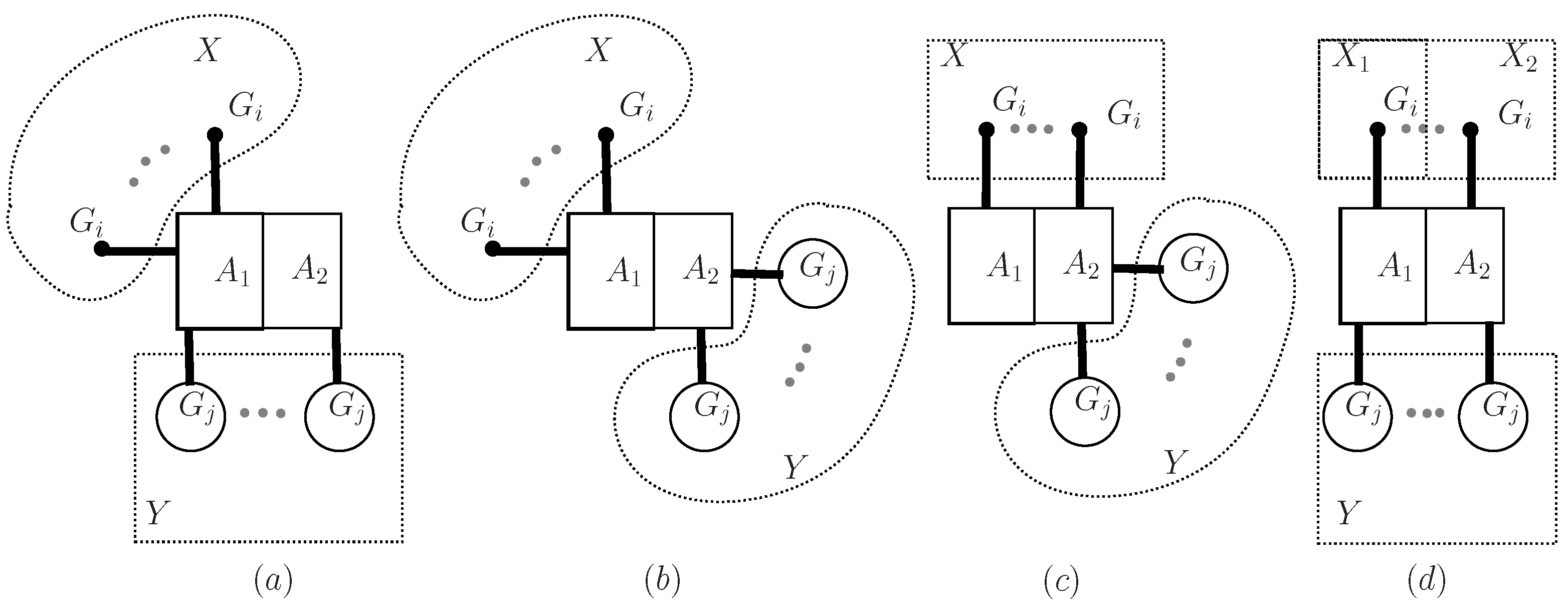
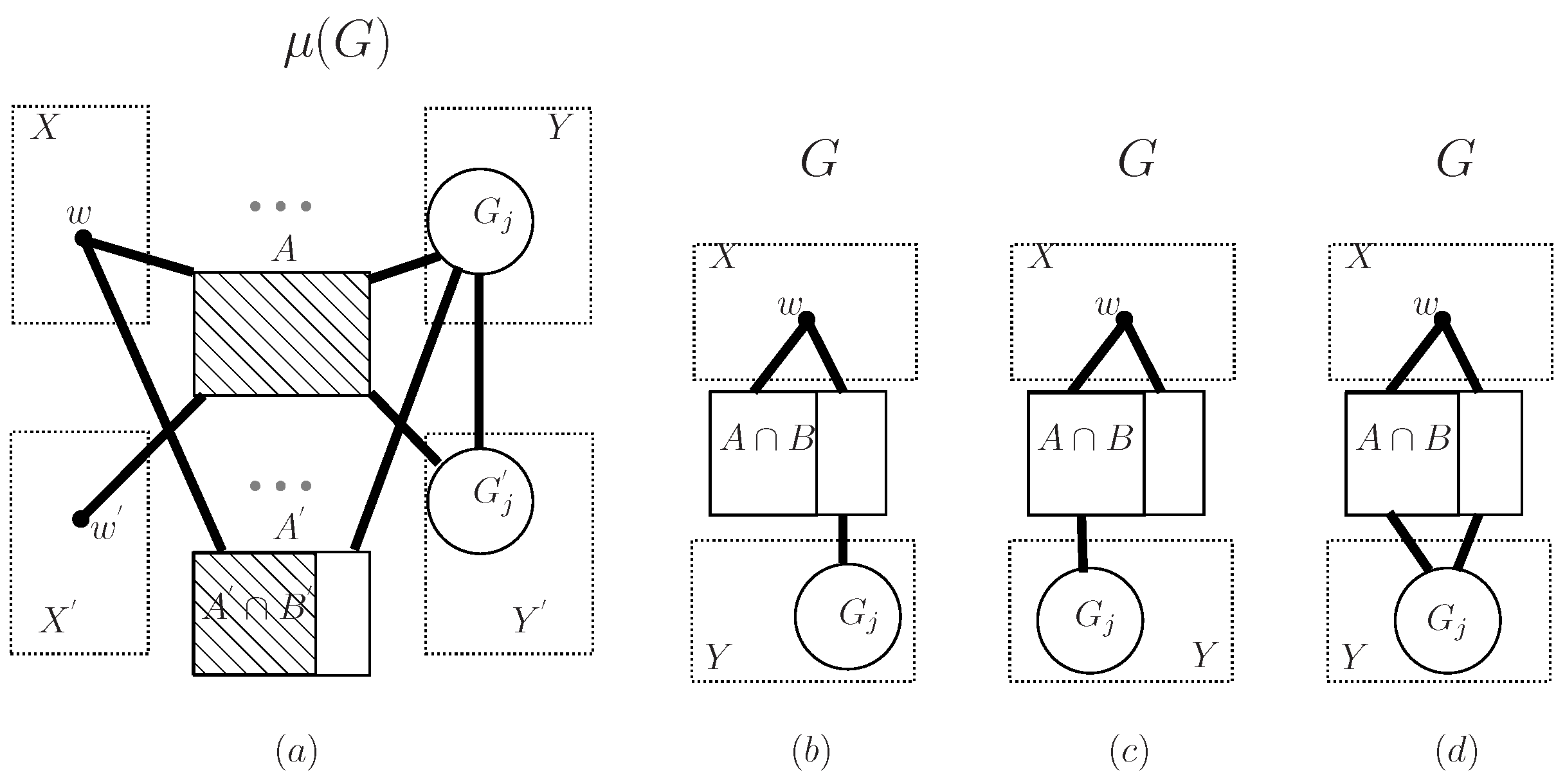
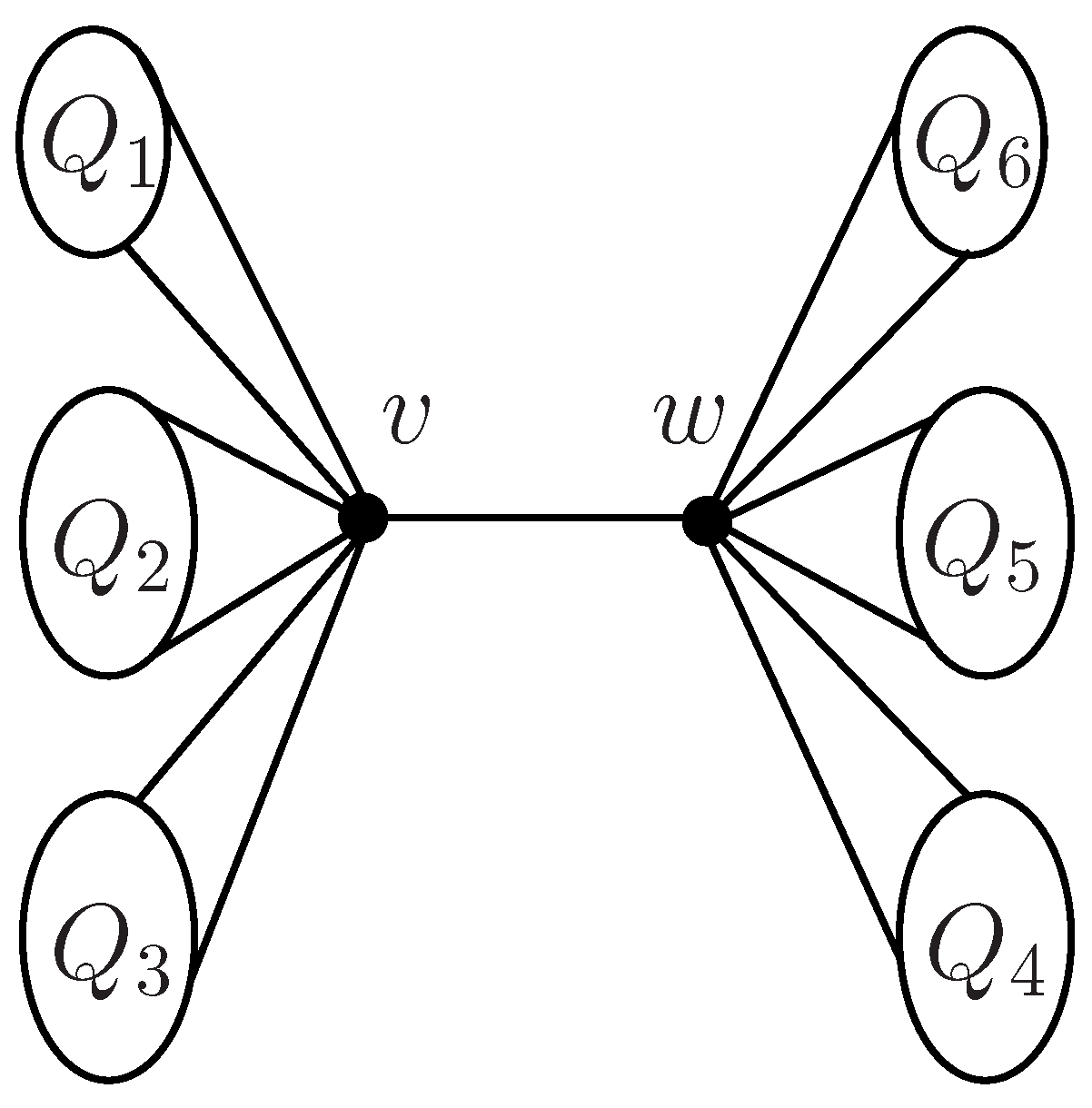
Disclaimer/Publisher’s Note: The statements, opinions and data contained in all publications are solely those of the individual author(s) and contributor(s) and not of MDPI and/or the editor(s). MDPI and/or the editor(s) disclaim responsibility for any injury to people or property resulting from any ideas, methods, instructions or products referred to in the content. |
© 2023 by the authors. Licensee MDPI, Basel, Switzerland. This article is an open access article distributed under the terms and conditions of the Creative Commons Attribution (CC BY) license (https://creativecommons.org/licenses/by/4.0/).
Share and Cite
Zou, J.; Li, H.; Zhang, S.; Ye, C. Generalized Connectivity of the Mycielskian Graph under g-Extra Restriction. Mathematics 2023, 11, 4043. https://doi.org/10.3390/math11194043
Zou J, Li H, Zhang S, Ye C. Generalized Connectivity of the Mycielskian Graph under g-Extra Restriction. Mathematics. 2023; 11(19):4043. https://doi.org/10.3390/math11194043
Chicago/Turabian StyleZou, Jinyu, He Li, Shumin Zhang, and Chengfu Ye. 2023. "Generalized Connectivity of the Mycielskian Graph under g-Extra Restriction" Mathematics 11, no. 19: 4043. https://doi.org/10.3390/math11194043
APA StyleZou, J., Li, H., Zhang, S., & Ye, C. (2023). Generalized Connectivity of the Mycielskian Graph under g-Extra Restriction. Mathematics, 11(19), 4043. https://doi.org/10.3390/math11194043





